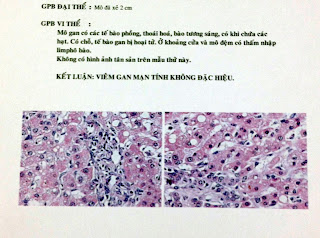Woman 40 yo with one week fever,
abdomen pain and distention..
Clinical examination ruled out surgical needs , chest X-ray is normal.
- Ultrasound of abdomen = liver, biliary system, kidney are normal, huge amount of ascites volume with cloudy fluid (us1 , us2, us3 pelvis us4 ovary).
CT scan of abdomen = No tumor detection [ ct1,frontal view, ct2,
ct3 cross section].
Blood tests = WBC 15k with 13,3 k
neutro, CRP= 25.9, amylase, CEA , CA 125 are normal level. But Widal test is
positive th;1/320
Ascites punction= yellow clear,
analysis = ADA= 19.5 ng/mL, CA125
:396 UI/mL, CEA: 0,8UI, albumine =3.9
mg/mL
After 2 weeks treated with antibiotics; response is good, no fever but ascites is
distention after aspiration many times.
Summary= Fever with typhoid but
ascites still persistent after one month.
Discussion : Fever and Widal test positive is Typhoid fever, treated response with antibiotics, but ascites is still progressing, so that is not feature of Typhoid fever (one expert of infectious disease says). Ascites analysis can rule out pancreatitis, tuberculosis and cirrhosis. With CT , ultrasound don't detect any tumor intra abdomen. Then the short way for diagnosis is laparoendoscopy for biopsy.
Laparoendoscopy detected multiple white spots intra parietal peritoneum, most common in diaphragma area (see foto) suspected peritoneal carcinomatosis.
















































